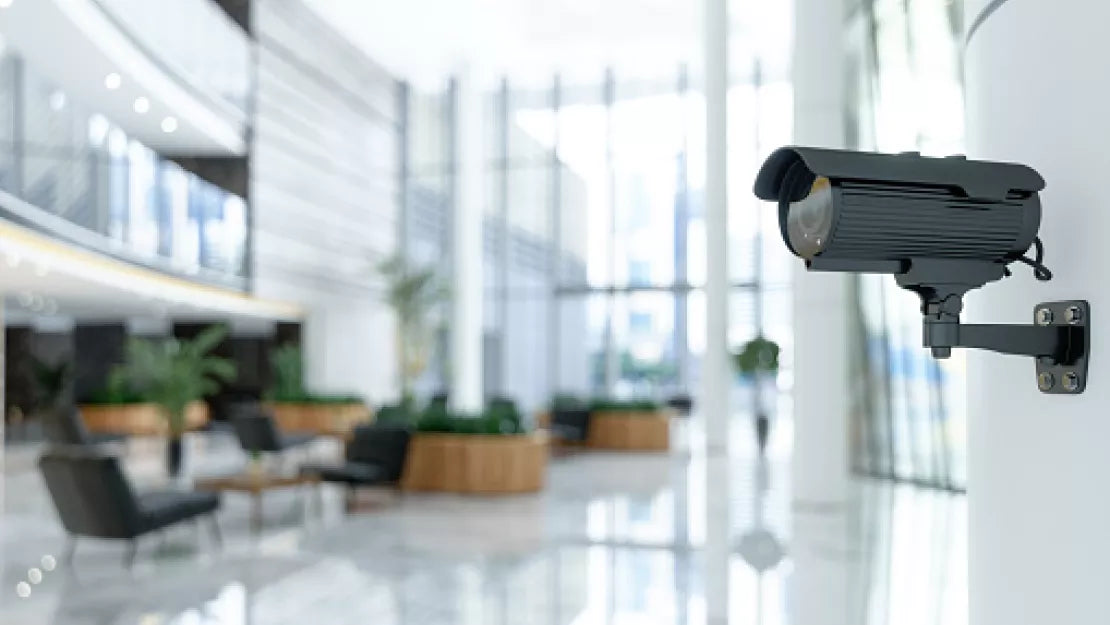Have you taken a job where you have hit a literal wall that you can’t go through or around? Sometimes you need to explore wireless options when a hard-wired route is impossible.
Luckily, wireless cameras and wireless PtP antennas have become more prevalent and easier to setup which significantly reduces the time spent on the procurement and installation of these types of products.
We've prepared this comprehensive guide to everything you need to know about wireless camera and antenna installation! Get ready to secure your project without sacrificing too much time or breaking the bank.
Getting Started
Before you start installing wireless security cameras, it's important to check the surrounding areas to ensure you have a clean line of sight or minimal wireless interference. Check to ensure that the line of sight is not interrupted by trees or buildings. Also keep in mind that high density living areas will have a lot of wireless interference dues to wireless routers, cell phones, smart devices, laptops, and other wirelessly enabled products.
Remember that you have all of the tools you might need. This can be as simple as screwdrivers, drills, and mounting screws to ensuring that you have a laptop in case you need to configure the settings.

Pre-Installation Preparation
Before you jump into installing wireless security cameras throughout a job site, it's important to make a few preparations. You want to ensure that the installation is smooth and successful!
-
Finding the best location for installation
First things first, scout out an area around your job site that will provide overview coverage without overlapping weak spots or blind zones. Some key points would include being close enough while also having a panoramic view from different angles.
You should also take note if there are any obstacles blocking the intended angle - such as trees, buildings, or walls – as well as security concerns like vandalism risks.
-
Preparing the installation area
Find mounting positions on solid surfaces. The surfaces need to be robust enough to hold up even through adverse weather conditions. It's best practice not to put them within easy reach of unauthorized personnel. Place them higher than 10 feet above ground level with minimum obstructions, such as off-street windows supporting optimal night vision capture. Do remember to clean up the surroundings and maintain good working order with clear views!
-
Powering your wireless security cameras
Before jumping into installation, you'll need to make sure that your wireless cameras have a power source. Most wireless security cameras come with two options: battery-powered and wired.
Battery-powered wireless cameras offer the convenience of not having any cords or cables sticking out while being installed, but they do require more maintenance than its counterpart- so keep an eye on their life span!
Steps to installing wireless security cameras
Now you should be ready to install security cameras or wireless antennas. Now we'll show you how to set up your system with ease with some simple steps!
- Step 1: Setting up your security camera system

The initial setup is a crucial part of ensuring that the whole process runs seamlessly. Depending on which route you are going, cameras or antennas, will change what you need to do but all of these will most likely need to have the NVR and network infrastructure in place before you begin with the cameras. If you purchase a wireless camera kit then the NVR is designed to communicate directly with the cameras which can simplify the network requirements whereas more professional NVR systems tend to use PtP antennas to operate as a wireless bridge to connect to multiple buildings or to interface to light poles where one or more cameras will be connected.
- Step 2: Mounting your wireless cameras near power source
Once you have successfully set up the foundation of the security camera system, it's essential to mount them in areas to maximize their efficiency. If you are using wireless cameras, most of them still require you to have a power connection so you need to consider where you are going to get power from. Wireless antennas get their power using regular ethernet cables and a power injector.
- Step 3: Connecting your cameras to the network
If you have purchased wireless cameras, then you need to initialize the camera and then add it to the wireless network using the SSID and passphrase. If you are using antennas then you need to create an access point on one of them which will get an SSID and passphrase and then configure the other antenna as a station that connects to the first antenna. Pro Tip: if you choose our new Wi-Tek antennas, you can skip the setup step because they are configured to communicate with one another right out of the box, even changing their channel is a simple process only involving pressing a few buttons on each antenna!
- Step 4: Configuring your wireless security cameras
After connecting them to the network, you must connect each camera to the NVR. You can use the NVRs search function or a laptop with a dedicated software designed by the NVR manufacturer. Once you have found the cameras on the network, you can begin adding them to the NVR. The NVR will typically handle the initialization of the cameras but you will still need to check the configuration to ensure it suits your needs. There are a variety of variables to look at including the compression type, bitrate, frames per second, resolution, and any special features you may want to enable. Also consider if you intend to record motion or continuously and adjust the schedule accordingly.
- Step 5: Testing your wireless security cameras
After all the cameras are installed and configured, it's time to make sure they work correctly. Make sure that each camera is showing live video and that the NVR is recording those feeds. Also consider if the viewing angle is ideal and that you have removed all protective plastics from the cameras (these can interfere with the night vision of the camera).
Post-Installation Setup
The installation process is over, and now it's time to set up the app on a mobile device and customize each camera's settings to ensure they function with maximum efficiency. Let us proceed!
- Setting up your mobile device and the security camera app
Once all of the cameras have been successfully installed, make sure you configure them by enabling remote access. This will allow surveillance from anywhere in real time. Downloading an appropriate app allows for live streaming straight onto any smartphone or tablet device, allowing remote visual monitoring at any given time.
- Configuring your camera settings
Ensure that each wireless security camera system has its specific configuration, like motion detection sensitivity levels. That will ensure efficient recording without false alarms being triggered either indoors or outdoors. Also, configuring timer setting options helps enhance user experience gained by accuracy when needed most!
What type of wireless security camera should you choose?

Choosing the right kind of wireless security cameras will depend on your expectations of their performance. Wireless-enabled cameras tend to be lower resolution compared to their wired counterparts and will need to be closer to the wireless router or access point that you are interfacing them to. If you need to have a long distance wireless signal then PtP antennas are a superior choice due to their design, they use a narrow angle antenna that can send and receive data much further – up to several miles in the right conditions.
If you are using antennas, then you are not limited on which cameras you can use. All wired IP cameras can have their signal sent over a PtP antenna pair. This is why antennas are the preferred solution for security integrators.
How do you power your wireless security cameras?
Wireless cameras have different options for a power source, such as plugging them into a wall outlet or using batteries if they are battery-powered. Wired cameras typically draw their power through Power over Ethernet (PoE) cables. Remember to ensure that the camera's power cable is securely connected to keep it running smoothly!
Where to buy wireless surveillance cameras?
When it comes to purchasing wireless surveillance cameras, We Supply Security has got you covered in San Diego and beyond! We offer a wide variety of high-quality security camera systems that are incredibly easy to install. From indoor and outdoor cameras with motion detection to digital video recorders (DVR) and network video recorders (NVR), we have everything you need for a complete security solution. All products come backed by our top-notch customer support and a 3 year warranty. Call us to learn more about wireless surveillance and our best-practices to ensure a successful installation!
Conclusion
You're now ready to install your wireless security cameras and safeguard your client’s home or business! We hope this comprehensive guide has given you a deep understanding of the different aspects involved in the installation process. Always remember to find ideal spots for placing cameras, power them using reliable sources, and configure them optimally. As an added bonus, check out the exclusive security camera collection at We Supply Security - we offer top-quality products backed by excellent customer service. Don't wait any longer; secure your home today and stay protected with peace of mind!


